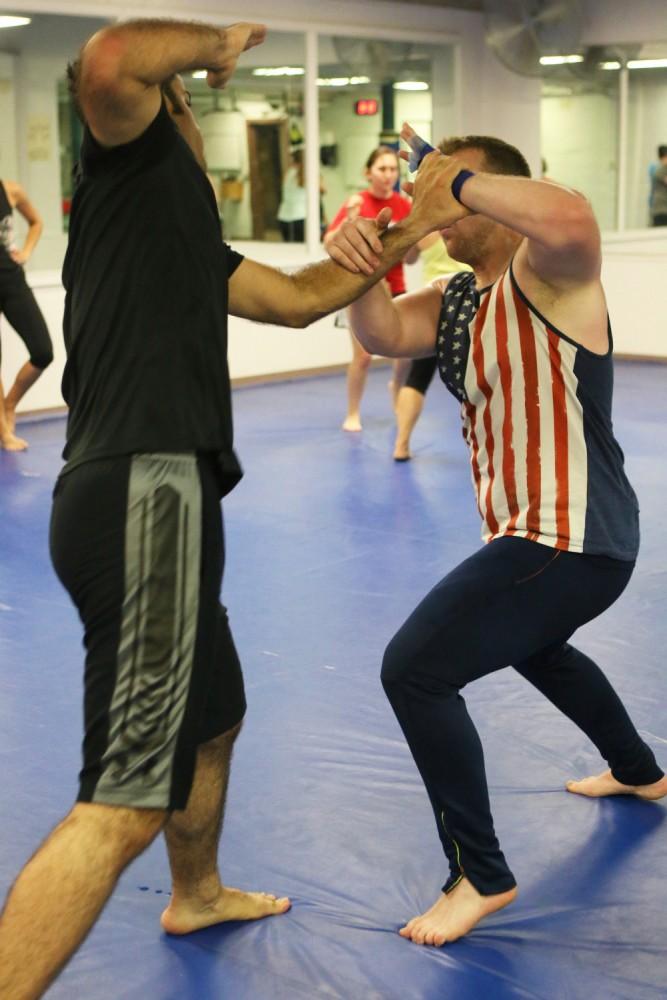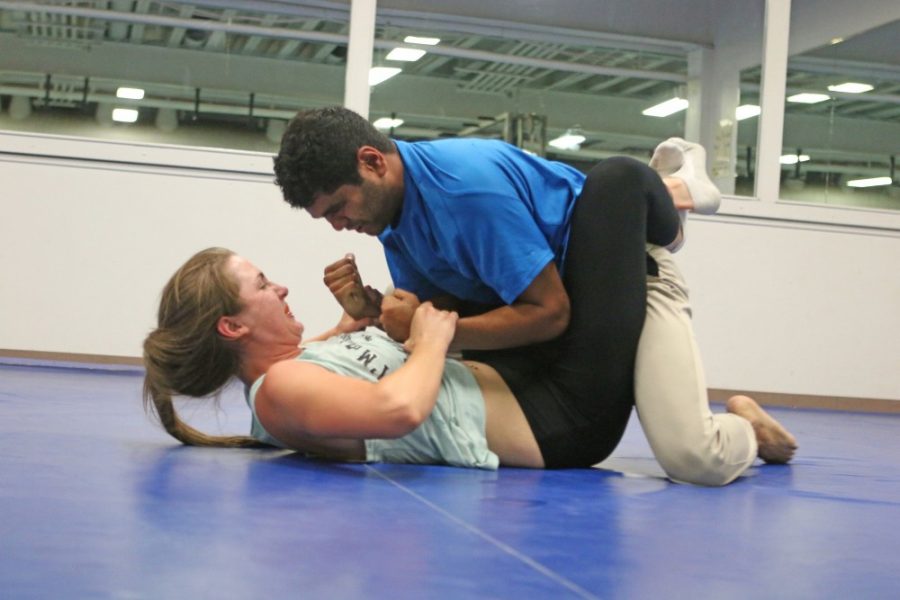The University of Arizona Police Department is in the middle of developing an organized self-defense class to teach students to protect themselves from violent encounters like sexual assault. Until that class is available, there are alternatives to be found on and around campus.
The first six weeks of the fall semester tend to have a higher rate of sexual assault on campus, making this an especially vulnerable time for college freshmen, according to UAPD Chief of Police Brian Seastone. This period is called the “Red Zone.”
“It is something real on this campus, and it is something we try to mitigate as much as possible,” Seastone said.
RELATED: History of rain: How monsoons have shaped desert culture
According to the Rape, Abuse and Incest National Network, known as RAINN, about 11.2 percent of all undergraduates will experience rape or sexual assault in some form.
For undergraduates, 23.1 percent of females, 21 percent of transgender, genderqueer or nonconforming persons and 5.4 percent of males will have such an encounter before they graduate.
The numbers can be daunting, but the first semester harbors an especially worrisome statistic — more than 50 percent of all sexual assaults on college campuses occur between August and November.
Many factors have been cited for this increase, Seastone said.
“The first six weeks of the school year are always a concern for a number of reasons,” he said. “Students are now out on their own, experiencing new things that they don’t have to report to home. People have a tendency to take chances they normally wouldn’t.”
In the fall semester, there is increased occurrence of alcohol consumption and more social events organized by both students and the university.
UAPD does its best to educate students on the importance of consent and the dangers of drinking. Through presentations and safety fairs throughout the year, there are many school features meant to keep people safe, including the emergency blue light telephone system.
“If for some reason an individual can’t stay at the blue light phone or doesn’t feel safe or comfortable, they can push the button on every blue light phone that they see and the UAPD will track their movements,” said Alvaro Rene Hernandez of UAPD.
Nonetheless, UAPD encourages students to stay cautious and alert.
“Have a plan, be cautious, aware of your surroundings, and if something makes you uncomfortable, let someone know,” Hernandez said.
RELATED: DeGrazia’s birthday celebration renews respect for Sonoran culture
According to the National Sexual Violence Resource Center, 63 percent of all sexual assaults go unreported and more than 90 percent of all sexual assaults on campus go unreported. RAINN attributes this to the victims’ fear of retaliation, the belief that the police will do nothing to help or other fears and misconceptions.
Seastone encourages victims to not be afraid of reporting instances of sexual assault. He said every reported case of sexual assault takes precedent at UAPD.
“People are reluctant to report [instances of sexual assault] and these cases are often difficult to follow up on,” Seastone said. “We make sexual assault cases a priority as far as we possibly can.”
There will be times when people may need to protect themselves, and Seastone and UAPD are hoping to provide a method of doing so. There is strong evidence to suggest that proper self-defense training reduces the risk of sexual assault.
“We are actually looking at bringing ongoing [self-defense] training to the campus,” Seastone said. “Any type of training that allows people to become more aware of their surroundings and gives them more self-confidence is always valuable.”
There are self-defense and women’s self-defense classes associated with the UA, but they are all organized by separate, individual groups and often come with fees, according to Seastone. For instance, the UA Campus Recreation Center offers a military combat arts class, but there is a fee per class.
A 10-minute drive down Euclid Avenue will take you to Tucson Rising Phoenix Fitness and Defense Facility, where Krav Maga black belt Jesse James Tucker and others teach “real-life self-defense” in a warm and fun environment.
“[Krav Maga] is something that is very easy for anybody to learn because it’s based on converting your gross motor skills and your natural flinch response,” Tucker said. “You’re training to attack vulnerable targets, so it’s something that a smaller, weaker person can train to be just as effective as a bigger, stronger person.”

Tucker, who was bullied and physically assaulted in his younger years, thought of self-defense training as a necessity.
“My favorite part [of teaching self-defense] is showing people how much power they really have inside them when they don’t realize it yet,” Tucker said.
Like Seastone, Tucker said even a few proper self-defense classes can increase someone’s confidence — and that in itself can protect somebody. According to Tucker, body language is half the fight.
“In most cases, just the confidence and the way you carry yourself and by being more aware of your surroundings can make you appear to be someone that nobody would want to mess with,” Tucker said.
Tucker said he believes that creating an open, safe and empowering environment is the most important part about being a self-defense trainer.
“Here, of course I’m going to push you do work hard and better yourself, but it’s in a fun, warm and welcome environment,” Tucker said.
If you’re interested in learning self-defense, there are several resources available at and around UA, including classes through UA Campus Rec, the Oasis Center at Campus Health and independent self-defense training facilities in town including Gracie Barra Tucson Brazilian Jiu-Jitsu & Self-Defense.
Follow Daily Wildcat on Twitter









